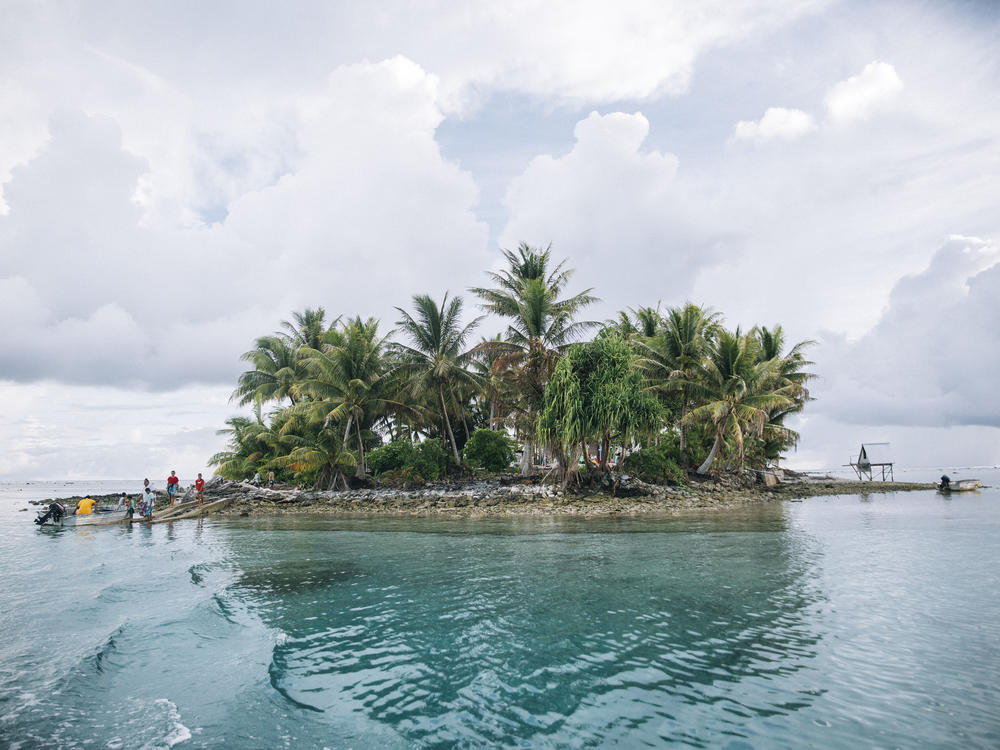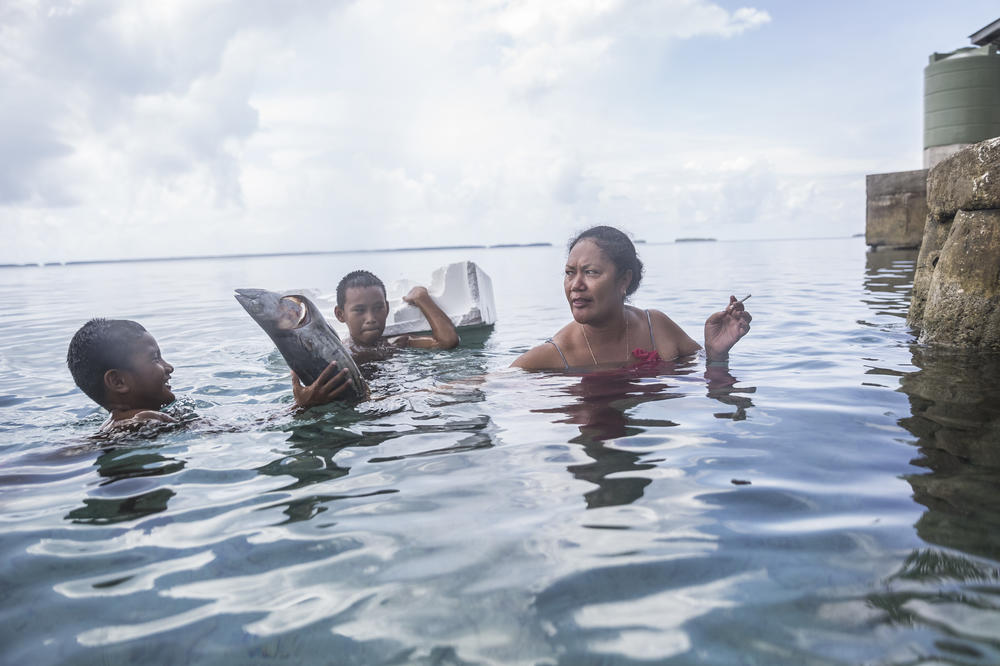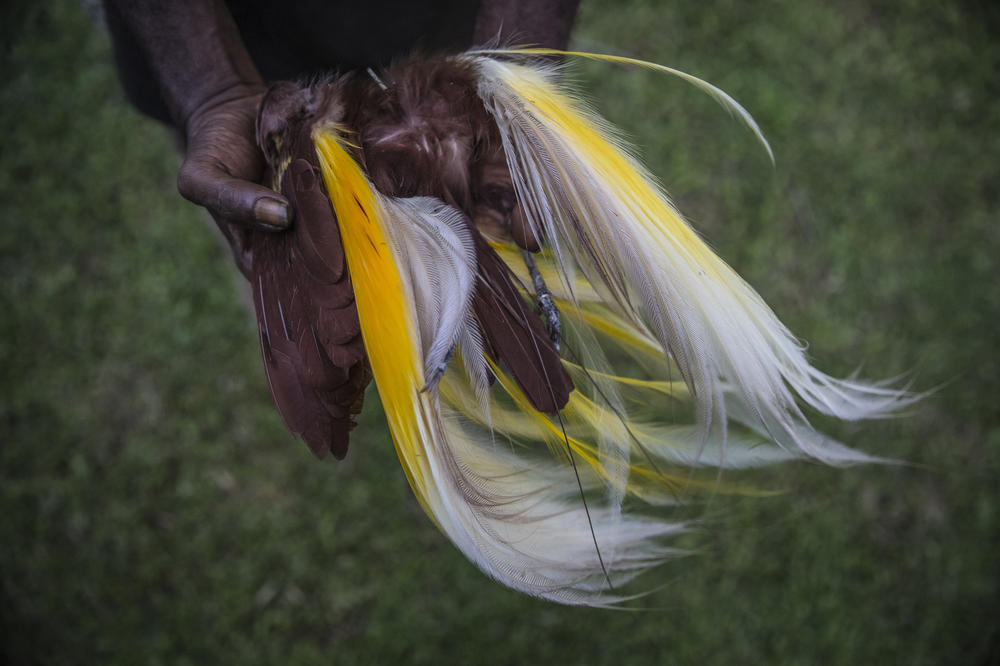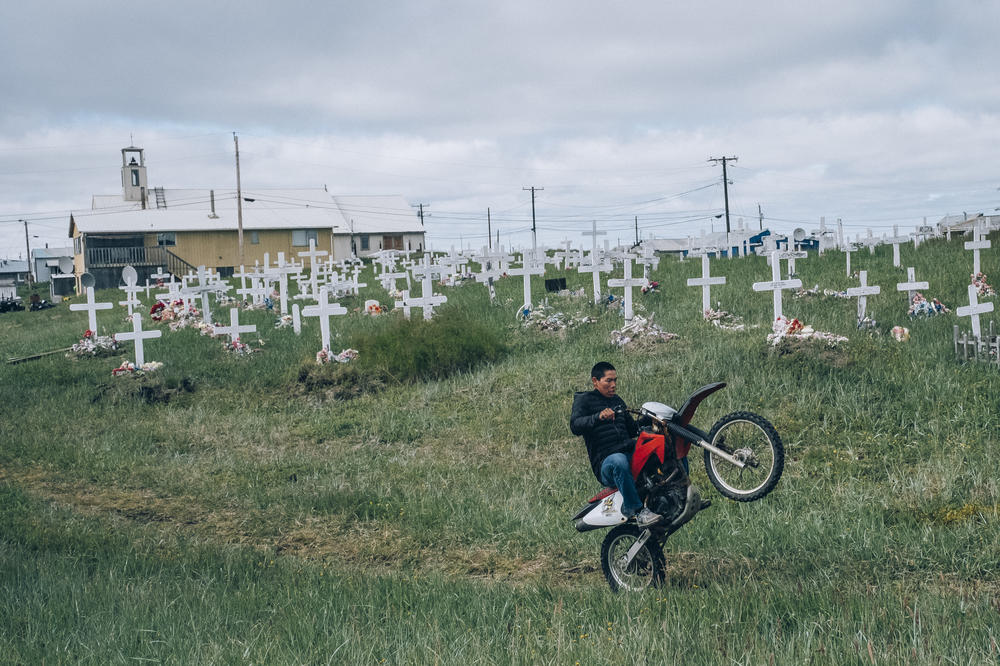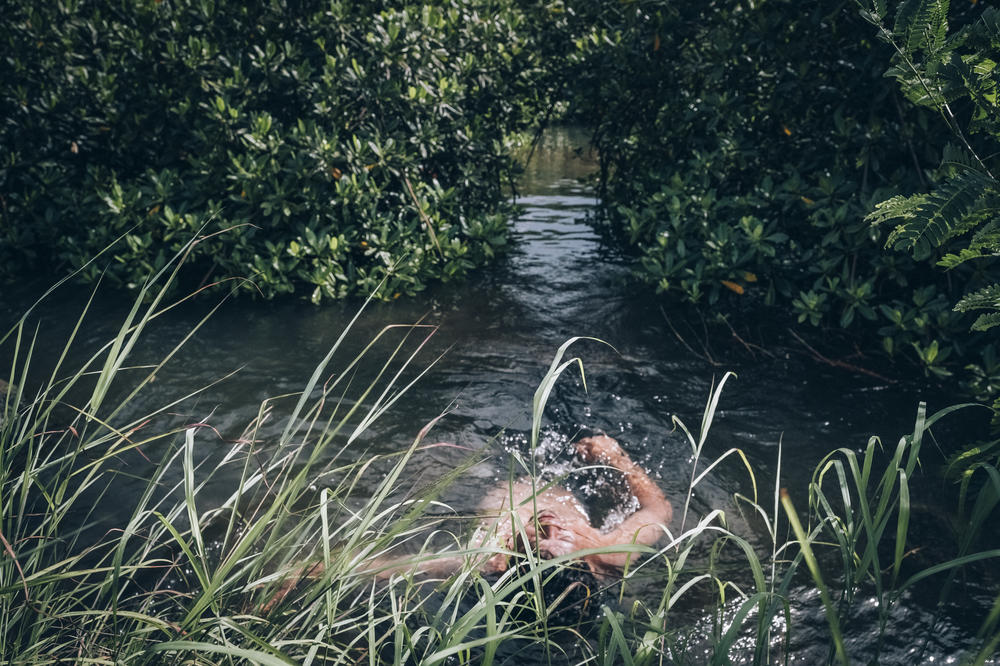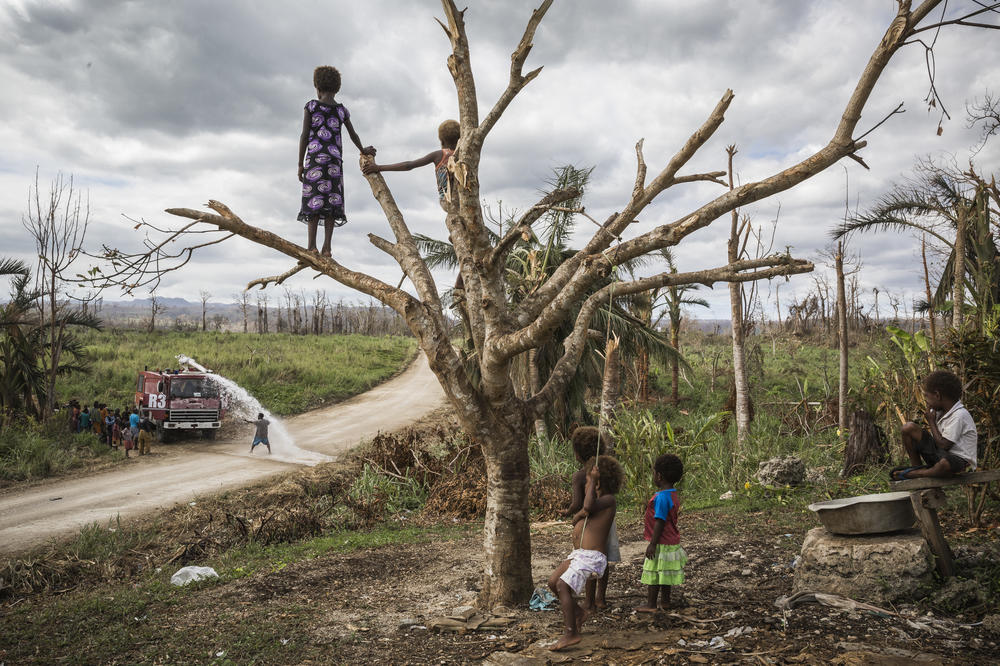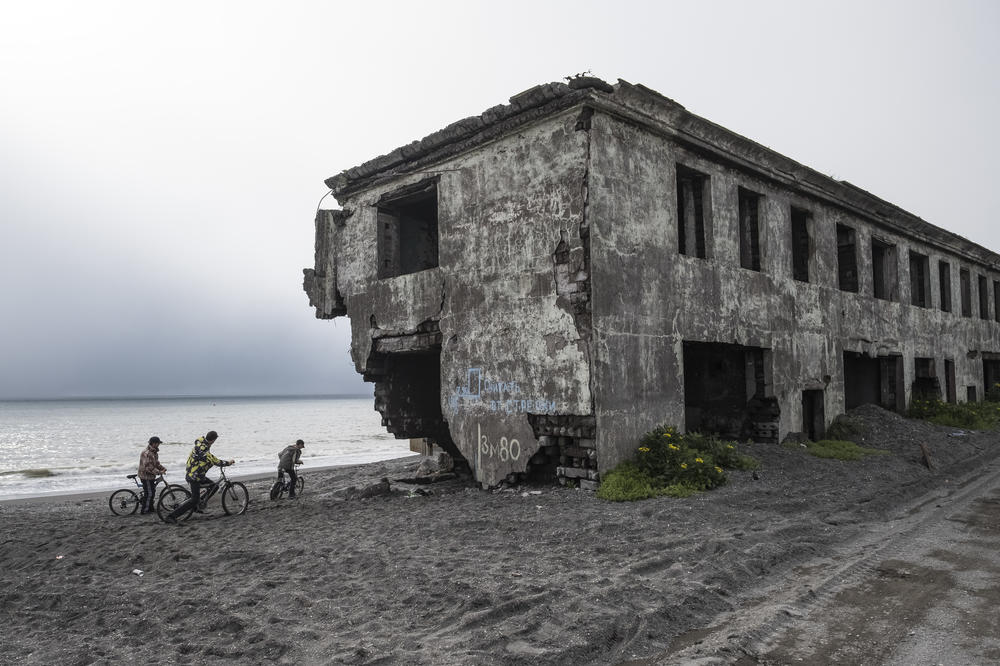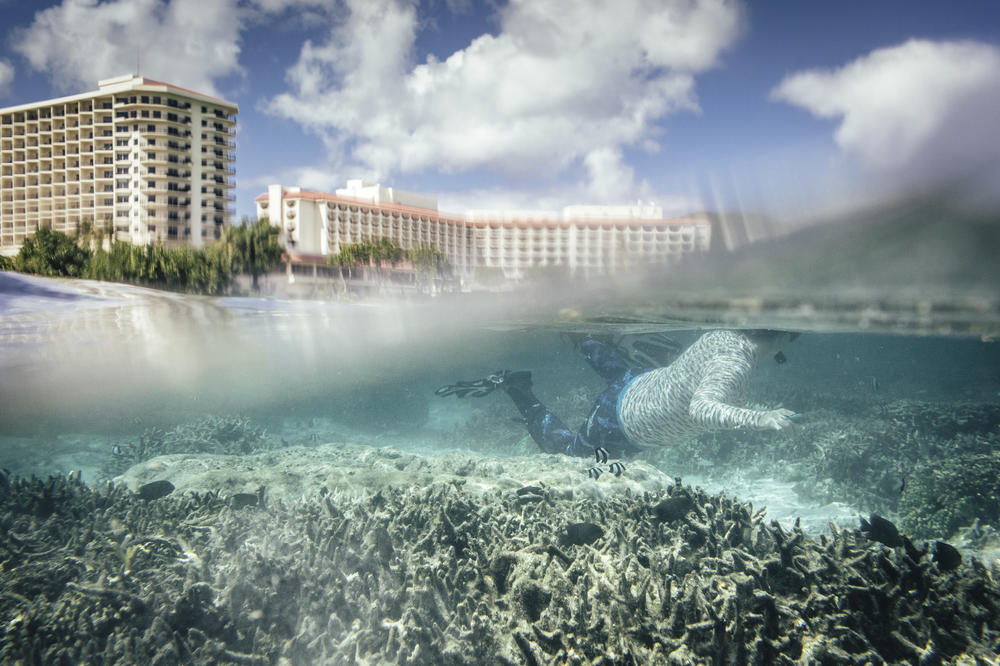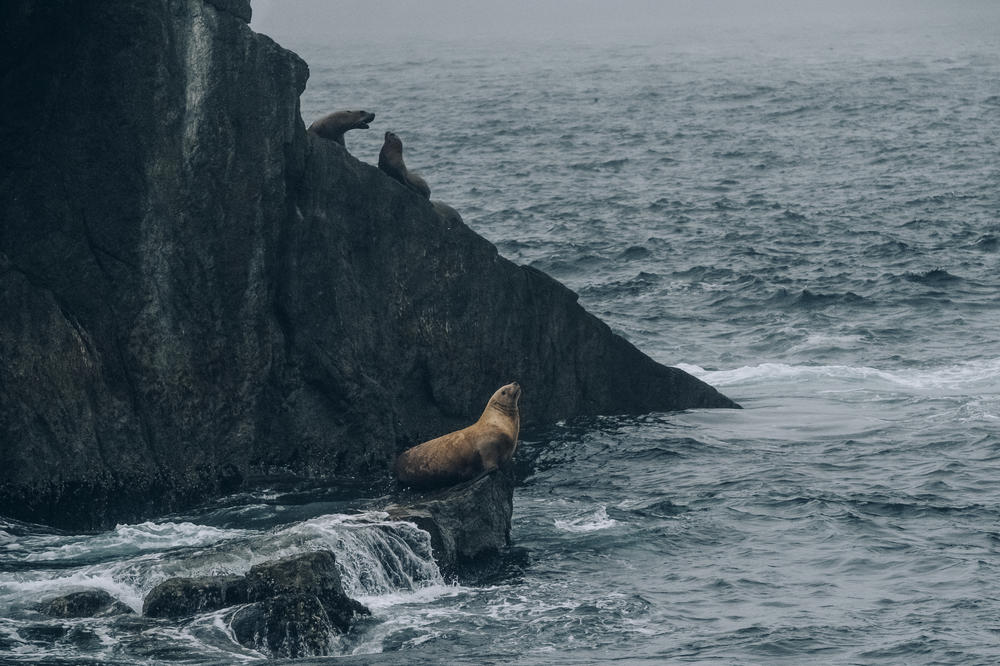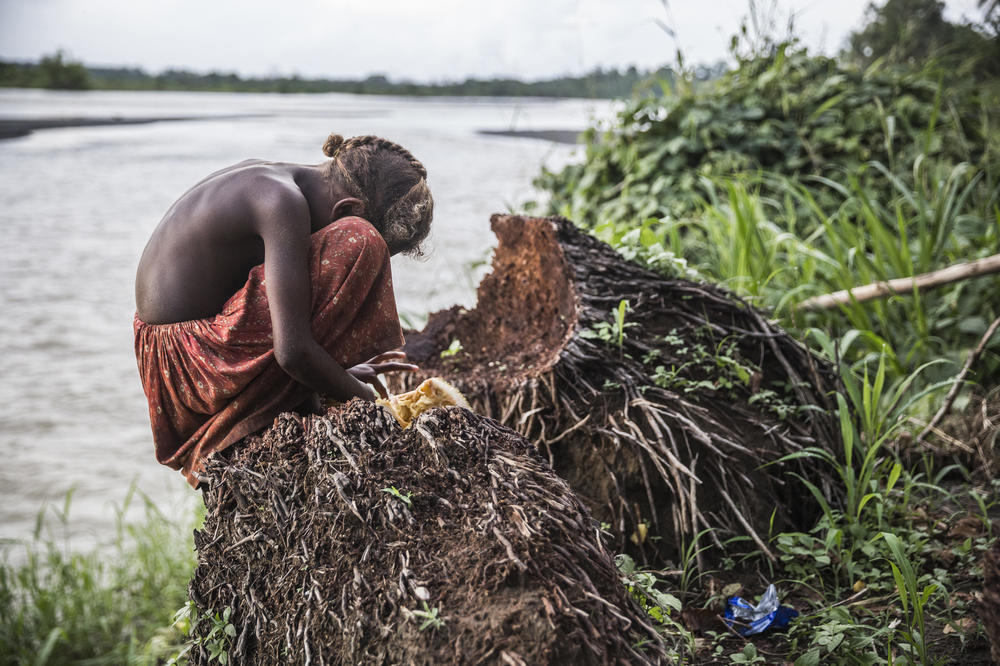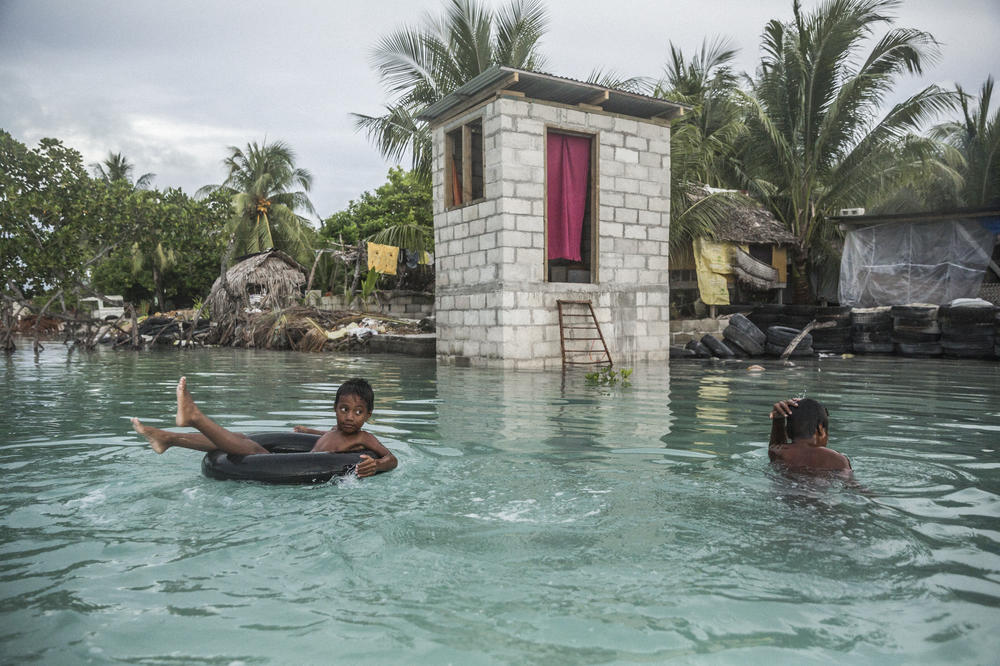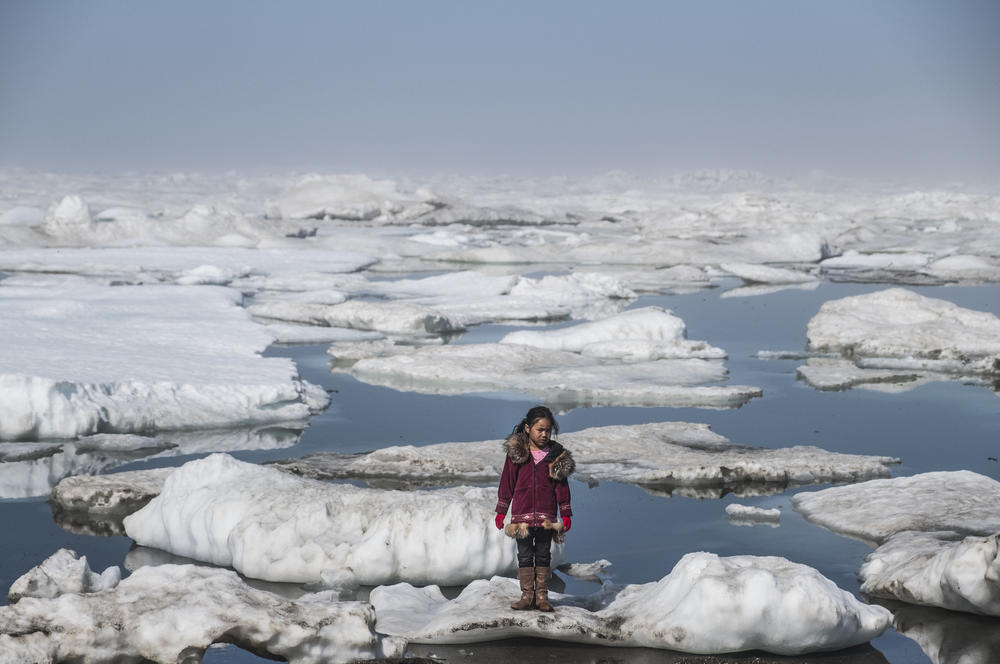Section Branding
Header Content
Their lands are oceans apart but are linked by rising, warming seas of climate change
Primary Content
Editor's note: As the 2021 U.N. Climate Change Summit convenes, NPR's Picture Show is taking a look at work by artists and visual journalists that highlight climate change.
Vlad Sokhin's interest in climate change came from his own global upbringing.
Born in Russia, and having spent formative years in Portugal, Sokhin made a career as a documentary photographer capturing health and human rights issues in Europe, Africa and Asia. Yet it was a 2013 assignment to cover deforestation in Papua New Guinea that convinced him to train his lens on humanity's impact on the planet.
"I saw how the environment was changing because of illegal logging," Sokhin tells NPR. "But the big picture wasn't there. I thought, 'What if I extend a little bit?'"
Eight years and thousands of miles later, the result is Warm Waters, (Schilt Publishing, 2021) an exploration of climate change traveling across 18 countries and off-the-map territories seen by seldom few.
Within his native Russia, Sokhin, 40, spends time with communities on the Kamchatka Peninsula. Across the Barents Sea, he photographs native Inupiat and Yupik settlements in Alaska. Both are confronting the same coastal erosion and melting permafrost — the once-frozen soil layer now fast disappearing throughout the Arctic region.
Mostly, Sokhin explores Oceania — the South Pacific — where rising tides have inundated communities in places like the Aleutian Islands, Micronesia, Kiribati, Vanuatu and Tuvalu. Some may recover, others may soon be lost to the sea forever. Yet Sokhin's lens is constantly drawn to locals trying to adapt the best they can.
As a book, Warm Waters is no straightforward travel narrative. Sokhin eschews the traditional format of photos with captions and location information, and instead opts for what he calls "tonal narratives" — unexpected visual connections across cultures, countries, and, of course, bodies of water.
"You can see what's happening there and it doesn't matter which island it is," says Sokhin. "This is affecting everyone."
At its core, Warm Waters is one photographer's attempt to show how global warming is connecting seemingly disparate lives across vast distances.
What Sokhin finds is cause for extreme worry, of course; but also moments of resilience and wonder.
Copyright 2021 NPR. To see more, visit https://www.npr.org.
